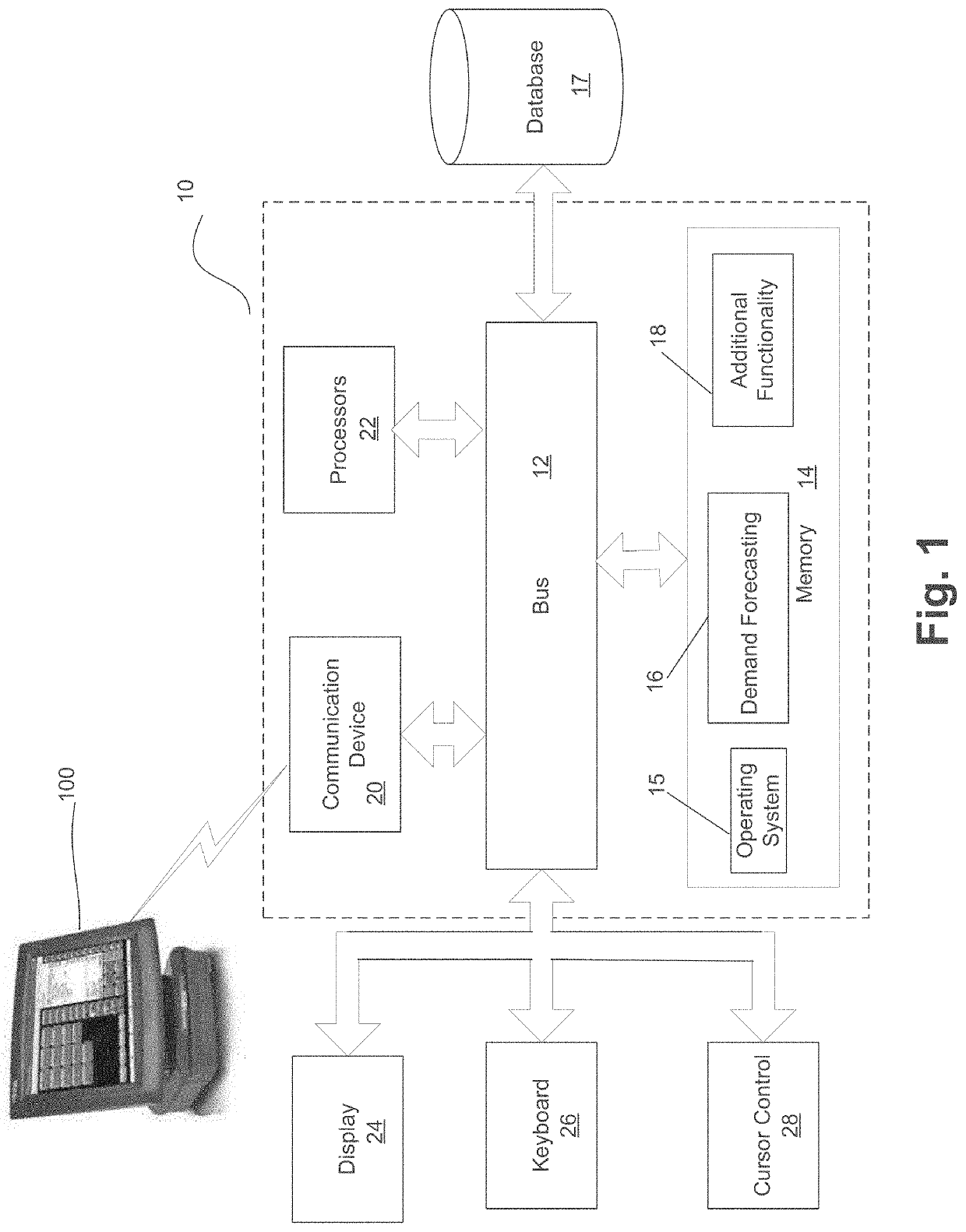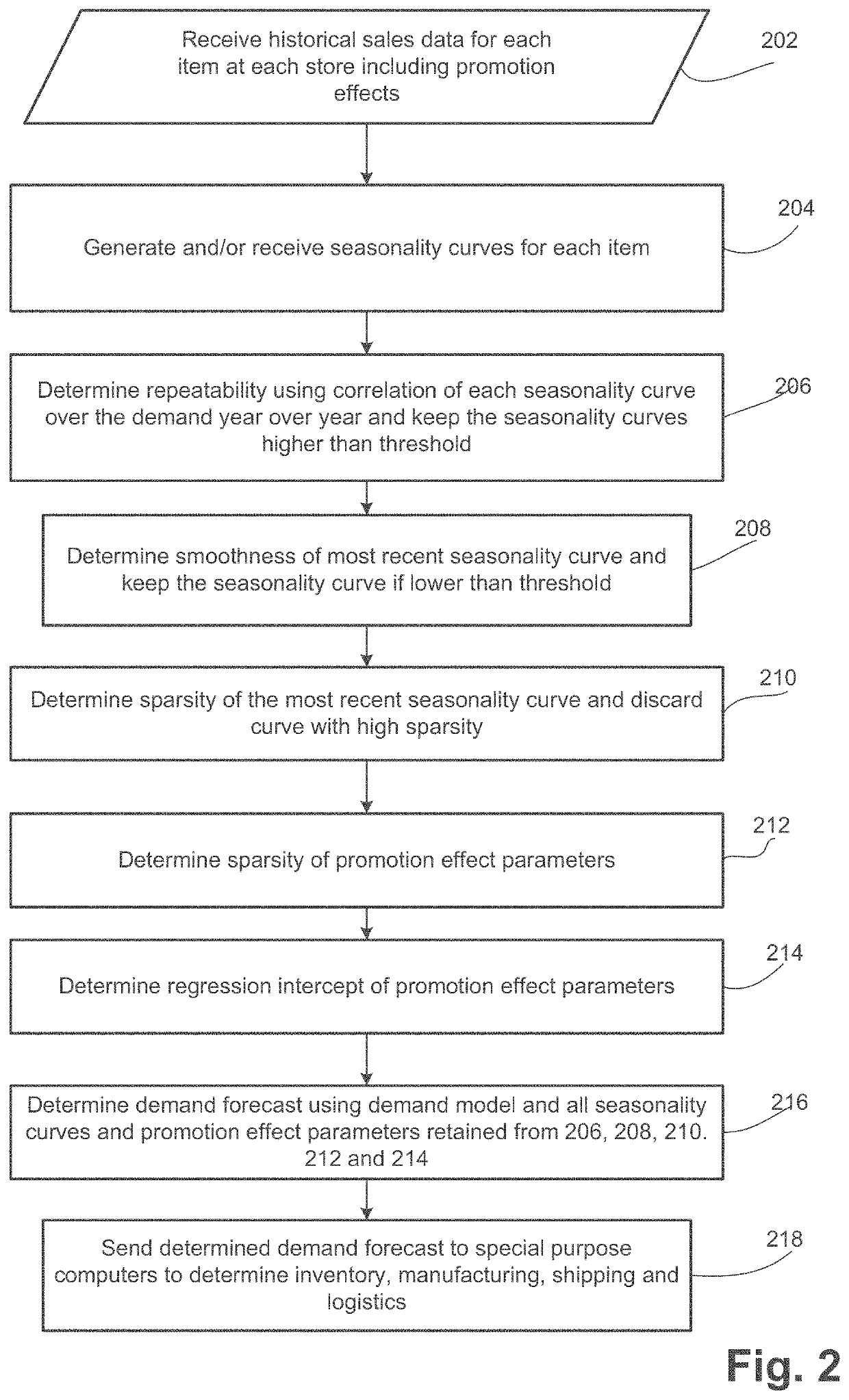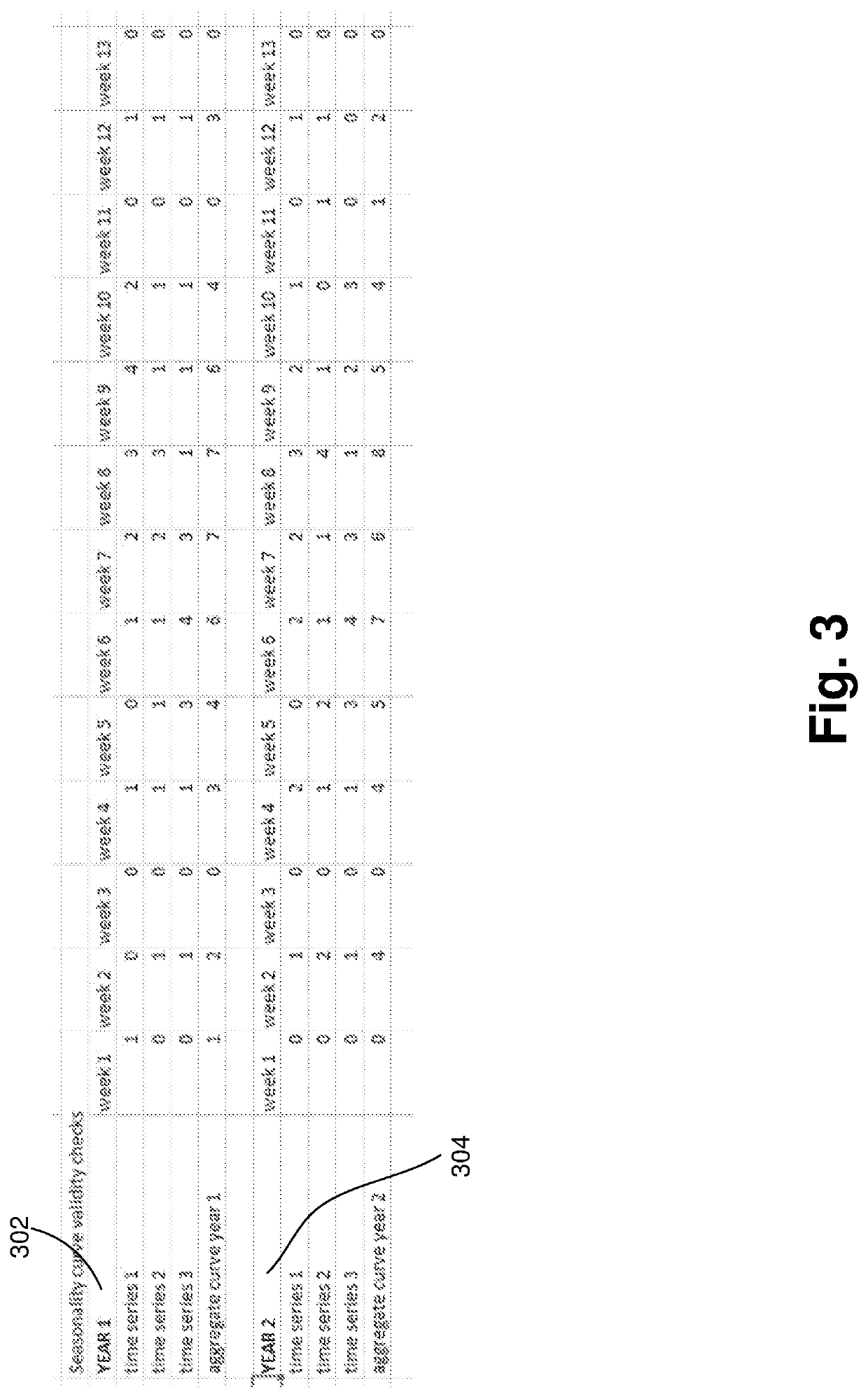Optimized Selection of Demand Forecast Parameters
a demand forecast and parameter technology, applied in the computer system field, can solve the problems of increased costs associated with holding inventories, lost revenues, and sales forecast systems encountering problems in producing
- Summary
- Abstract
- Description
- Claims
- Application Information
AI Technical Summary
Benefits of technology
Problems solved by technology
Method used
Image
Examples
Embodiment Construction
[0020]Embodiments automatically determine problematic demand forecast model parameters and then remove the problematic parameters from the demand forecast and replace with reliable parameters. Of those reliable parameters, embodiments automatically select the best of the parameters. As a result, the demand forecast is optimized and more accurate.
[0021]Sales demand forecasting methods can roughly be grouped into judgmental, extrapolation, and causal methods. Extrapolation methods use only the time series data of the activity itself to generate the forecast. Known particular techniques range from the simpler moving averages and exponential smoothing methods to the more complicated Box-Jenkins approach. While these known methods identify and extrapolate time series patterns of trend, seasonality and autocorrelation successfully, they do not take external factors such as price changes and promotion into account.
[0022]Vector Auto Regression (“VAR”) models extend the Box-Jenkins methods t...
PUM
 Login to View More
Login to View More Abstract
Description
Claims
Application Information
 Login to View More
Login to View More - R&D
- Intellectual Property
- Life Sciences
- Materials
- Tech Scout
- Unparalleled Data Quality
- Higher Quality Content
- 60% Fewer Hallucinations
Browse by: Latest US Patents, China's latest patents, Technical Efficacy Thesaurus, Application Domain, Technology Topic, Popular Technical Reports.
© 2025 PatSnap. All rights reserved.Legal|Privacy policy|Modern Slavery Act Transparency Statement|Sitemap|About US| Contact US: help@patsnap.com



